All About Candle Wicks
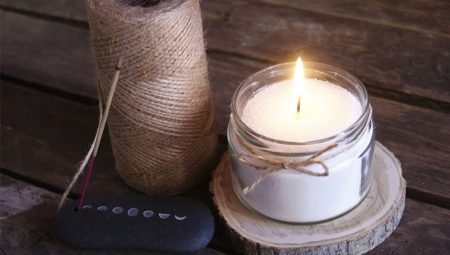
Any candle will not burn if there is no wick in it. This element is purchased in specialized stores or made with your own hands.
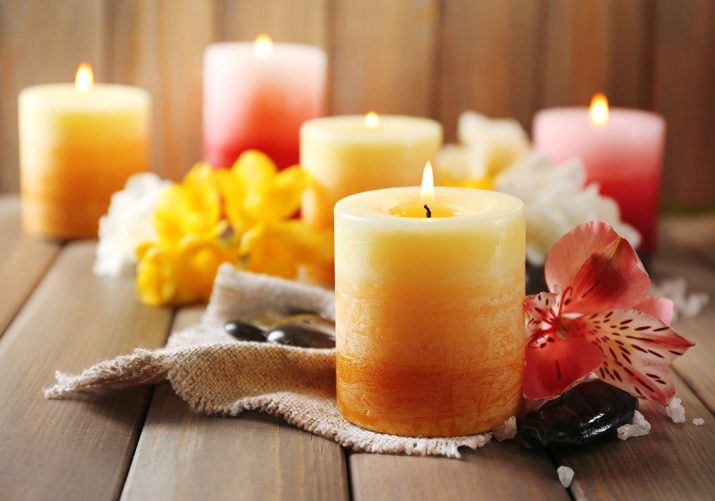
Peculiarities
The candle wick is the central part of the candle that provides combustion. It can be made from different materials. It depends on her how well and for how long the lighting fixture will function, and also whether it starts to smoke. The main task of the product is to deliver the wax to the place of combustion. The dimensions of the wick determine how much fuel it can "transport". This part is in most cases formed from a bundle of fibers twisted, knitted or intertwined together. It is they who absorb liquid wax or other candle mass, and then pull it towards the fire under the influence of capillary forces.
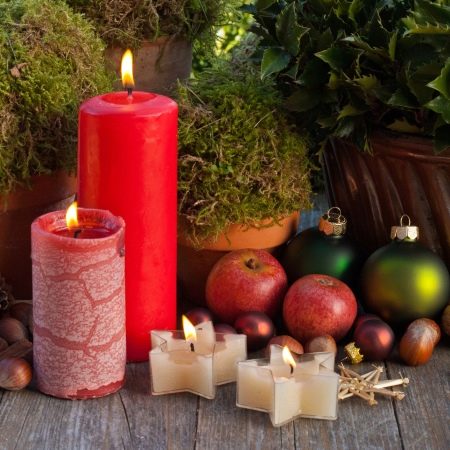
In order for the wick to allow the candle to burn, it must be impregnated with a special solution. For example, it could be a mixture of 0.5 liters of water, 10 grams of borax, 5 grams of ammonium chloride, the same amount of sodium nitrate and calcium chloride. After mixing the components, the wick is soaked in the resulting solution for at least a quarter of an hour, and then dried for 5 days.

A combination of 700 milliliters of liquid, 1 gram of ammonium chloride and the same amount of sodium nitrate is also suitable, as well as a mix of 30 grams of slaked lime, 8 grams of sodium nitrate and 500 milliliters of water. In the absence of special components, the workpiece can be impregnated with a solution of 1.5 liters of drinking water, 2 tablespoons of table salt and 4 tablespoons of borax.
If the wicks are harvested for future use, after drying, they are recommended to be dipped three times in melted wax.
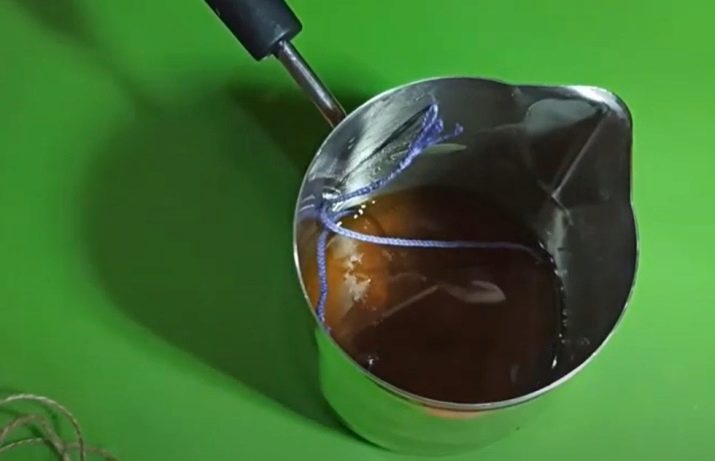
Description of species
There are dozens of different types and sizes of wicks. Cotton called the highest quality and most common. A piece made of natural fibers connected in a certain way contributes to a calm and unhurried burning.
Wicker a wick made of cotton threads has a strong structure and perfectly holds its shape, but twisted a wick made of the same material is characterized by a lower density and, accordingly, poorer quality. By the way, twisted wicks are used much less often than knitted or braided ones, since they burn out faster due to their design.
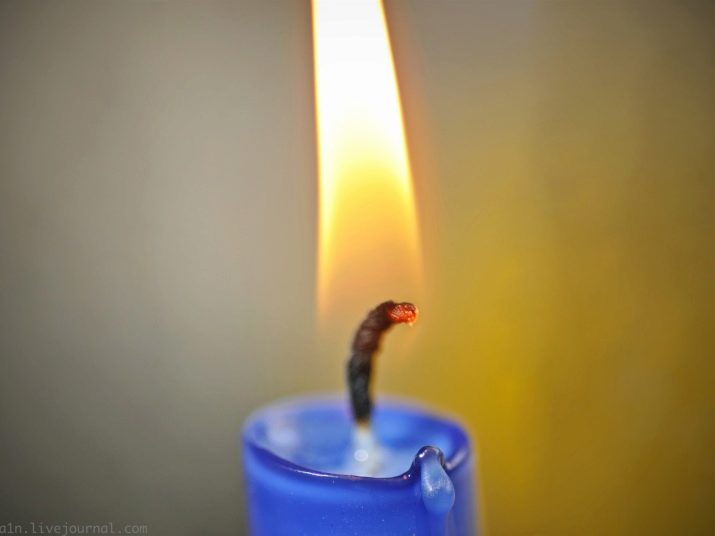
The wood wick is natural and safe. It holds its shape well and emits a pleasant aroma, but is cracky and produces a less intense flame. In industrial production, non-combustible fiberglass wicks are often preferred.
By the way, you can also use colored wicks in your work, for example, made from red or yellow floss.
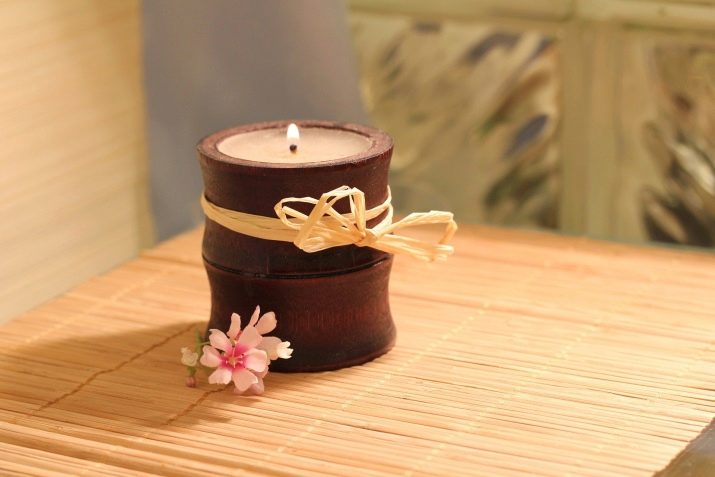
Flat
Flat wicks are called braided or knitted wicks, assembled from three fiber bundles. They burn sequentially, and therefore are most often used for conical, bulk or cylindrical lighting products.

Square
Square wicks are also made by braiding or knitting. Unlike flat ones, they turn out to be more rounded, as well as more difficult to manufacture. The square wick works well with beeswax.

Reinforced
Reinforced can be both wicker and knitted parts for candles. An additional solid component (zinc, tin, paper or ceramic fibers) is woven into the fabric threads to keep the wick in place while the candle is in use. As a rule, such wicks with a rounded cross-section are used for the production of candles with a glass shell.
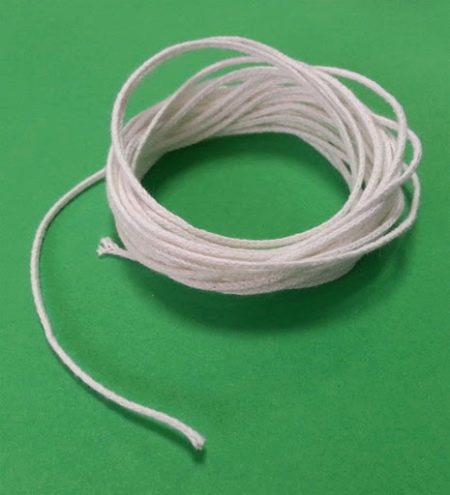
Special
Special wicks are created when it is impossible to use either reinforced, square or flat parts. For example, we can talk about oil lamps or devices that repel insects.

Selection Tips
Extremely important choose a wick according to the diameter of the candle... For thin samples (up to 3 centimeters thick), thin wicks are suitable, for models with a diameter of 3 to 7 centimeters - medium ones, and for wide ones it is recommended to use thick accessories. If we are talking about a cotton wick, then for the smallest candles you will need to use about 15 twisted threads, for medium-sized samples - 24 fibers, and for large ones - more than 30. It is also worth mentioning that loose wicks made from slow-burning cotton threads are more suitable for wax candles.
For a lighting fixture made of a different material, it is better to choose a tightly stitched wick.
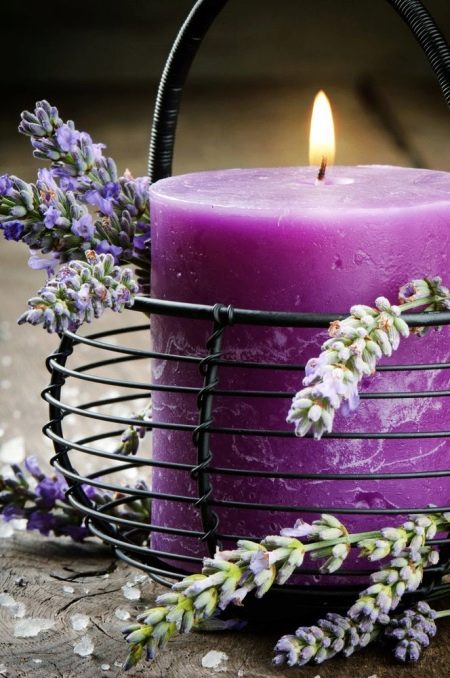
Beeswax products require a thick fiber or yarn wick. Paraffin candles are more suitable for thin, tightly twisted threads. For gel and bulk models, it is recommended to prepare a reinforced wick impregnated with wax, paraffin and stearin. Foundation products require a wood wick, just like soy products. The latter will also work with standard rope pieces.

It should be mentioned that if the device periodically goes out and forms a puddle near the base of the light, it means that the wick is too thin. If the wax or other substance melts rapidly, draining abundantly, and the wick smokes and curls up at the end in a knot or loop, then the problem lies in the part that is too thick.
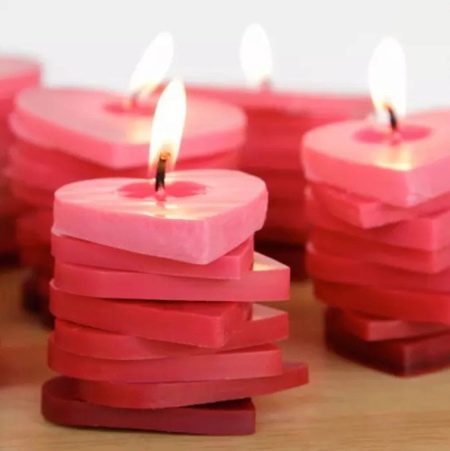
What and how to do it yourself?
You can make a wick yourself from several materials at hand. Usually, craftsmen use cotton threads, wooden skewers, cloth scraps, braid, gauze and bandage.At home, it is better to make the key component of the candle from natural cotton threads, for example, floss. We must not forget that synthetic materials burn quickly, but at the same time they smoke, crackle and smell unpleasant. Defining synthetics is quite simple: you need to set fire to the tip of the fiber and see what happens.
The formation of a hard ball and the melting of the filament indicates that the material is of artificial origin.


The wick itself is created as follows: The floss is soaked in one of the solutions described above, or in a mixture of a glass of water, a tablespoon of salt and a couple of tablespoons of boric acid. In this case, the procedure is carried out for 12 hours, and then the material is also dried for several days. Finished threads are twisted with flagella or braided.
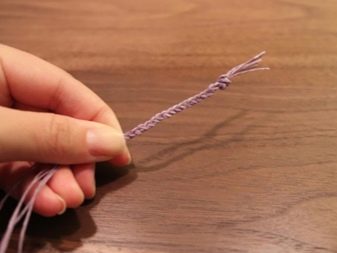

Cotton threads are allowed to be replaced with a bandage or braid. If there is a narrow bandage at home, then it is better to choose it and cut the existing piece along. It is necessary that the length of this blank match the height of the candle. The lower part of the bandage is tied in a knot, and the rest is twisted with a tourniquet. After soaking in the impregnation and completely drying, the wick is inserted into the candle using a wire. When using the braid as a wick for thin candles, you will need to cut it lengthwise, and for thick ones, leave it unchanged. Its lower end is tied with a knot or immediately fixed on a special holder.
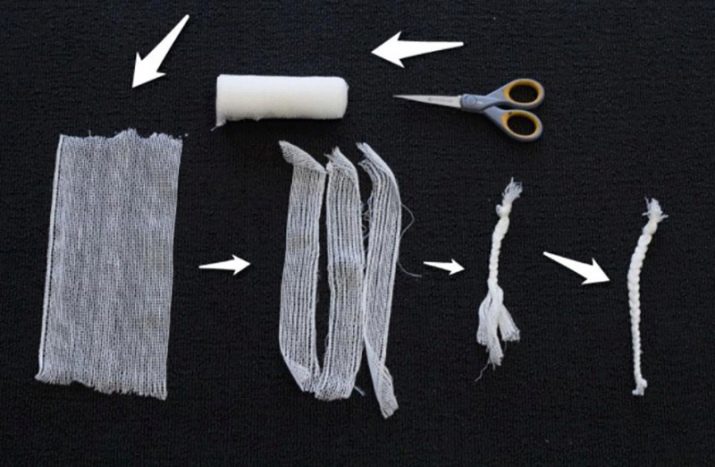
Hardwoods can also be used instead of threads.... The wood is used to carve a stick that matches the length of the candle. After the billet has dried, it is soaked in olive oil for 20 minutes with occasional turning. After the above period, the stick is removed from the oil, wiped off and placed in a low glass in an upright position. The finished wick is inserted into the candle only after final drying.
In a similar pattern, the constituent candles are created from toothpicks, canapé skewers, or sushi utensils. During the impregnation of the workpieces, they must be turned over several times. The oil should be soaked just enough to cover the sticks. It is also required to store ready-made wicks in an upright position.
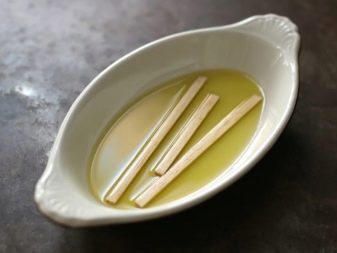
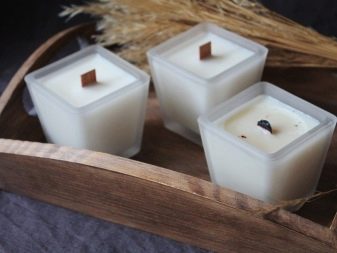
A homemade jute wick is also very easy to form. The rope of the required length is dipped into the same molten wax with which the base for the candles is filled. As soon as the substance begins to produce bubbles or foam strongly, the thick thread will need to be pulled out, straightened and dipped in water. After drying on a clean surface, the part will be ready.
Some craftswomen, however, prefer to immerse the workpiece in wax several times until air bubbles stop appearing. Store such a wick in a cool place, loosely wound on a spool and laid with layers of paper. The impregnated samples are usually wrapped in dry newspapers.
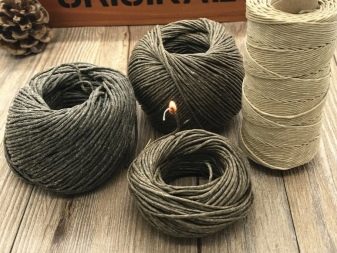
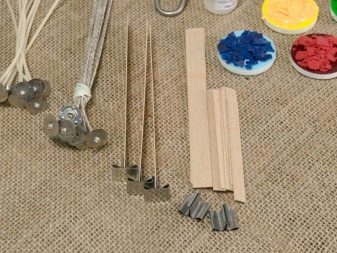
A detailed master class on making wicks can be found in the following video.








